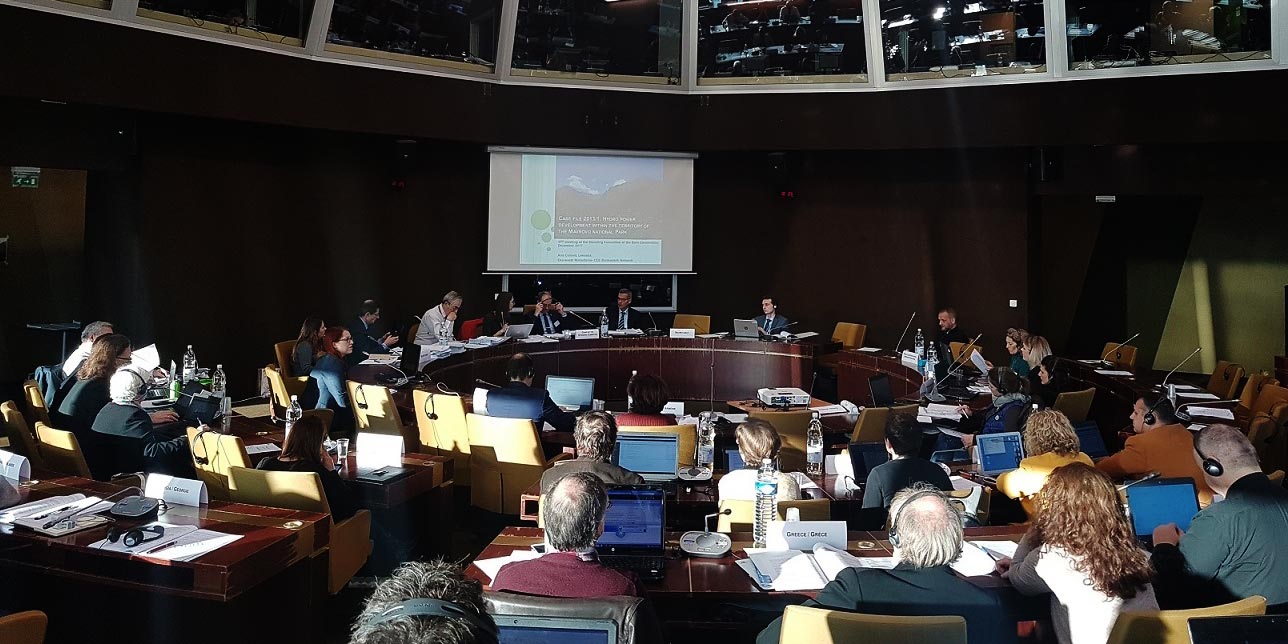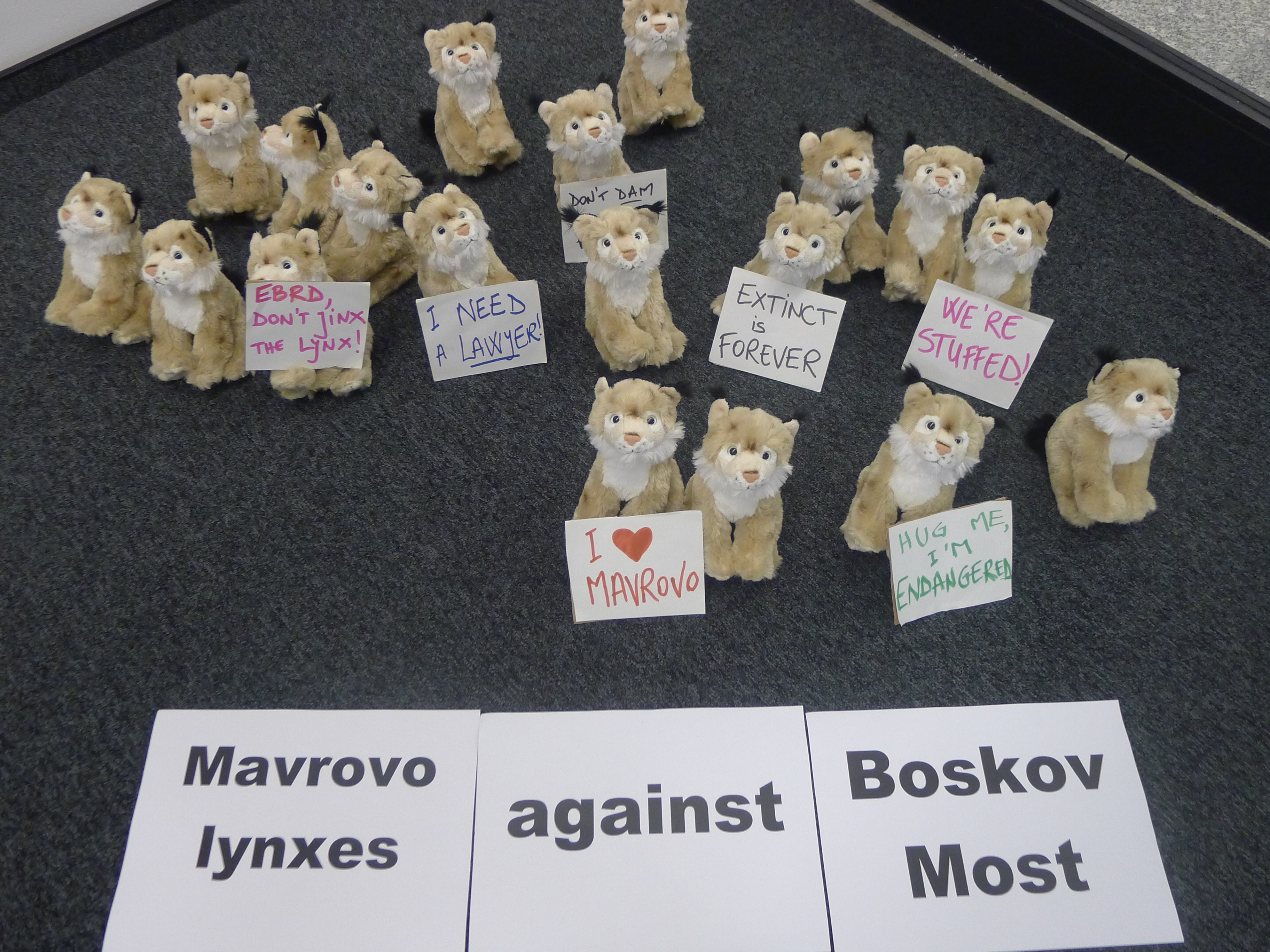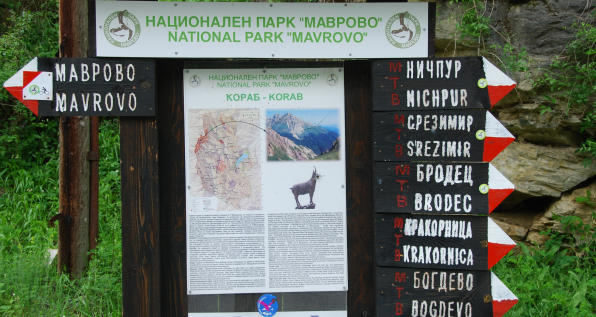Boskov most hydropower plant, North Macedonia
Boskov Most was one of 18 hydropower greenfield projects planned by the North Macedonian government in the Mavrovo National Park. After five years of campaigning, we convinced the European Bank for Reconstruction and Development about the folly of this project and to cancel its EUR 65 million loan. Without its major source of funding, the project lost steam and was discontinued.

Stay informed
We closely follow international public finance and bring critical updates from the ground.
Background
The Boskov Most HPP was planned to enhance domestic electricity supply, but if it had been built, it would have done so at a devastating cost to the environment.
The project involved the construction of a 68 MW hydropower plant, reservoir and a 33-meter-high accumulation dam in one of Europe’s oldest national parks at Mavrovo.
Mavrovo is a protected area renowned for its beech forests, alpine meadows, pristine rivers and streams. It hosts a vast number of unique species, including the critically-endangered Balkan Lynx.
“National parks are areas set aside to protect large-scale ecosystems from human interference. As such, they are absolute no-go areas for large-scale dams or any other destructive forms of land use.”
Letter of concern over the Boskov Most HPP from scientists to the EBRD
The Boskov most camaign wins the Goldman prize
Ana Colovic Lesoska has been awarded the 2019 Goldman Environmental Prize for Europe for leading this multi-year ampaign in Mavrovo. Given annually to environmental heroes from around the world, the Goldman honors the achievements and leadership of grassroots environmental activists globally.
FEATURED
Gross underestimation of costs
The state owned electric power utility AD Elektrani na Makedonija (ELEM) backed the project with the support of international public finance.
In 2011 the European Bank for Reconstruction and Development (EBRD) pledged a EUR 65 million loan and a EUR 18 million equity investment in ELEM, before finally pulling out in 2017.
In addition to the EBRD’s financing for Boskov Most, the World Bank considered a USD 70 million support for the Lukovo Pole hydropower plant.
Nearly 200 internationally renowned scientists opposed the project in an open letter to the EBRD, and 100 000 people signed a petition against the project.
In total, an area of 4 400 hectares of natural habitats would have been directly affected by the Lukovo Pole and Boskov Most projects.
Independent reviews flagged incompliance
The EBRD’s involvement in the project was an insufficient guarantee of sustainable planning. In January 2014, after a complaint from Eko-svest in 2011, an independent review found that the bank failed to adequately assess impacts to biodiversity.
In addition, the Bern Convention, which oversees nature conservation in Europe, decided to examine whether North Macedonia had made the necessary efforts to protect wild flora and fauna when planning hydropower projects in Mavrovo. It concluded that Boskov Most and other planned hydropower projects in the park would have violated national and European nature protection legislation, which bans the development of this infrastructure in habitats with high ecological status.

The beginning of the end

In 2015, the Standing Committee of the Bern Convention called on the North Macedonian government to stop all construction projects inside the national park and to conduct an extensive environmental impact assessment.
Just a few days after the Bern Convention decision and following protests in front of its offices across the world, the World Bank withdrew its funds from the Lukovo Pole project.
At the time, the EBRD suspended its loan, stating the Bern Convention’s recommendation. A year later, it canceled its loan for Boškov Most as well.
The hydropower folly dealt a final decisive blow when the North Macedonia’s government removed both the Boskov Most and Lukovo Pole projects from the strategic documents for the energy development of the country.
Latest news
Skavica mega dam: Albanian court to scrutinise special law for U.S. contractor Bechtel
Press release | 21 September, 2023Nature conservation and human rights organisations have secured an important first milestone in the fight against the planned 210 MW Skavica hydropower plant in the Albanian municipalities of Kukës and Dibër.
Read moreChinese-built Dabar hydropower plant in Bosnia and Herzegovina set to destroy four Emerald and two Ramsar sites
Blog entry | 31 July, 2023If completed, the EUR 338 million project would violate a Recommendation of the Bern Convention No. 217 (2022) and leave tributaries of the Neretva river without water. People living in the Nevesinjsko karst field oppose resettlement and flooding of their houses and land.
Read moreBosnia and Herzegovina’s draft NECP: The good, the bad and the ugly
Blog entry | 20 July, 2023Bosnia and Herzegovina’s draft NECP finally looks to the future, plans no new fossil fuel power plants and significantly scales back unrealistic hydropower plans. But existing coal plants are to keep operating illegally and the draft is furtive about coal-to-biomass plans.
Read moreRelated publications
Why hydropower in southeast Europe is a risky investment
Report | 27 July, 2022 | Download PDFHydropower, together with coal, has traditionally played a major role in the power systems of southeast Europe, with particularly high shares in Albania, Montenegro and Croatia. And today, southeast European governments, utilities and energy experts are keen to build even more hydropower.
Flagships or red flags? Risks of proposed flagship infrastructure projects under the Economic and Investment Plan for the Western Balkans
Briefing | 24 March, 2022 | Download PDFUnder the European Commission’s October 2020 Economic and Investment Plan for the Western Balkans, the Instrument for Pre-Accession (IPA) is set to provide grants worth EUR 9 billion, with up to EUR 20 billion more in investments leveraged through the Western Balkans Guarantee Facility. Western Balkan governments have proposed projects for financing in ten Flagship areas for investment. The list of these proposed projects contains many which appear reasonable and much-needed, but many others are not in line with EU policy and/or legislation and must not be funded with EU money. This briefing provides an overview of selected projects that have been nominated by governments but which are not in line with EU policy and/or legislation.
Update to the Bern Convention on the Complaint No. 2016/09 – Possible threat by hydropower to “Svaneti 1” Candidate Emerald Site
Official document | 22 February, 2022 | Download PDFThe Svaneti 1 Candidate Emerald site in Georgia is threatened by the decision of the Georgian government to reduce its size for construction of the 280 MW Nenskra Hydro Power Plant (HPP) project. This is an update by the complainants on the Complaint No. 2016/9 – Possible threat to “Svaneti 1” Candidate Emerald Site who request an on-the-spot appraisal mission by the Bern Convention to Georgia, in order to investigate the threats to rivers that were recorded by Bankwatch during its fact-finding mission in July 2021.

